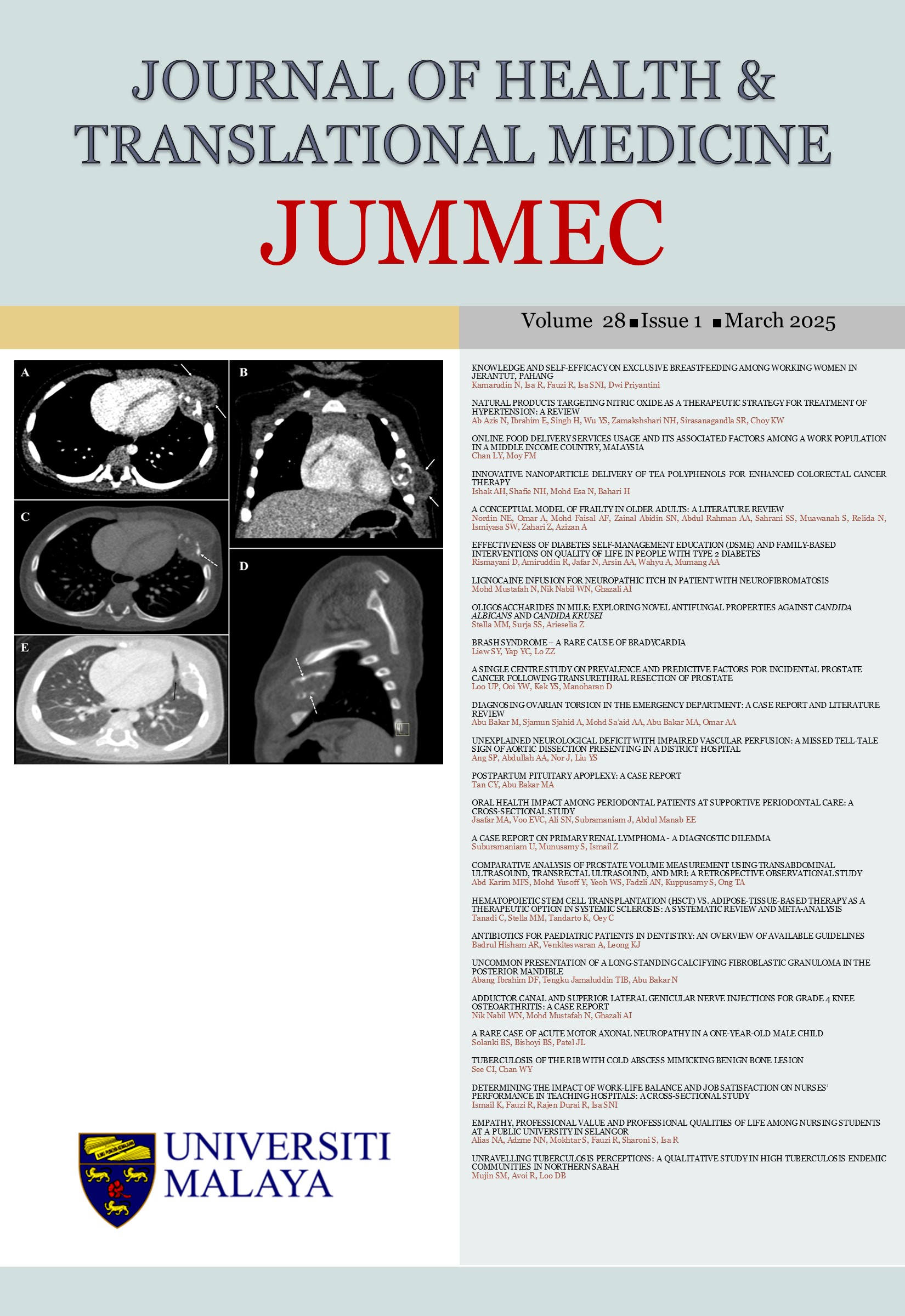POSTPARTUM PITUITARY APOPLEXY: A CASE REPORT
Received 2024-01-14; Accepted 2024-07-01; Published 2025-01-02
DOI:
https://doi.org/10.22452/jummec.vol28no1.13Keywords:
postpartum, pituitary apoplexy, pituitary macroadenomaAbstract
Background: Postpartum pituitary apoplexy is an extremely rare neurological emergency. It may present with sudden onset of headache, vomiting, nausea and visual disturbances. This potentially life-threatening emergency requires a high index of suspicion from the attending clinician. Postpartum pituitary apoplexy was challenging to diagnose because of its symptoms that overlapped with multiple conditions. There are limited number of case reports on postpartum pituitary apoplexy.
Case presentation: We present a case of a 30-year-old multipara with gestational diabetes mellitus presented with on and off headache since 37 weeks period of gestation. Her complaint was not investigated by medical personnel during her routine antenatal follow-up until she had a normal delivery. Subsequently, she developed diplopia, nauseated and vomiting episodes post-delivery but she only came to seek treatment in our emergency department on day 12 post-partum as symptoms are not resolving. Initial Contrast Enhanced Computed Tomography (CECT) of Brain revealed enhancing sellar lesion causing widening of pituitary fossa which then she was scheduled for Magnetic Resonance Imaging (MRI). MRI brain revealed lobulated sellar and suprasellar mass with mass effect to optic chiasm and she underwent endoscopic endonasal transsphenoidal excision of tumour. Post operatively, her vision improved and she was discharged subsequently with oral hormonal supplements.
Conclusion: Diagnosis of pituitary apoplexy should be suspected whenever headache and neurological deficits are present although it is an extreme rare condition.
Downloads
Downloads
Published
Issue
Section
License
All authors agree that the article, if editorially accepted for publication, shall be licensed under the Creative Commons Attribution License 4.0 to allow others to freely access, copy and use research provided the author is correctly attributed, unless otherwise stated. All articles are available online without charge or other barriers to access. However, anyone wishing to reproduce large quantities of an article (250+) should inform the publisher. Any opinion expressed in the articles are those of the authors and do not reflect that of the University of Malaya, 50603 Kuala Lumpur, Malaysia.


